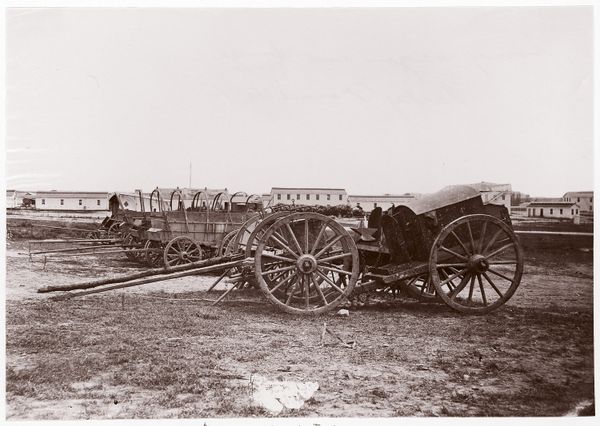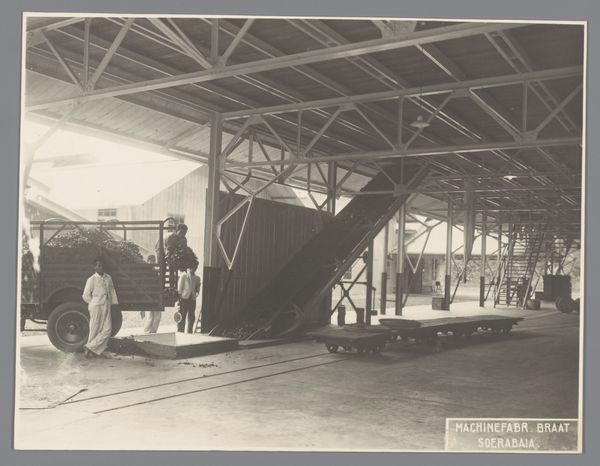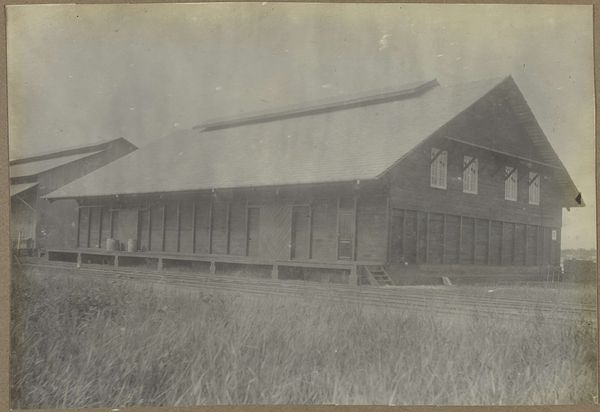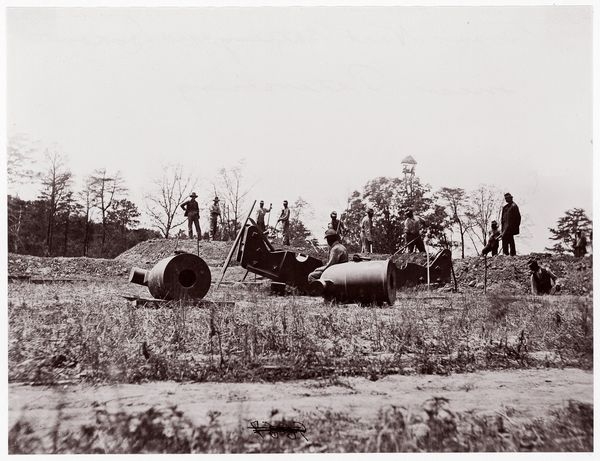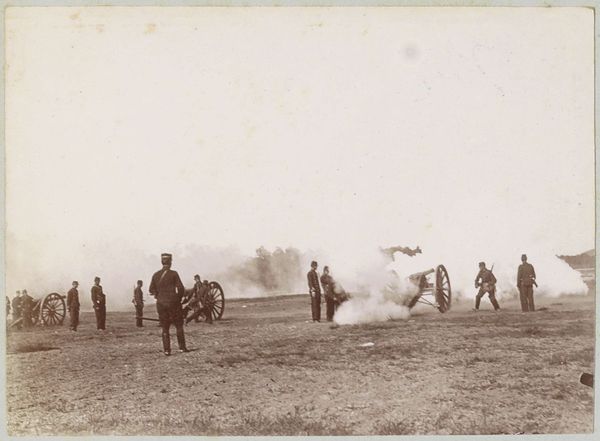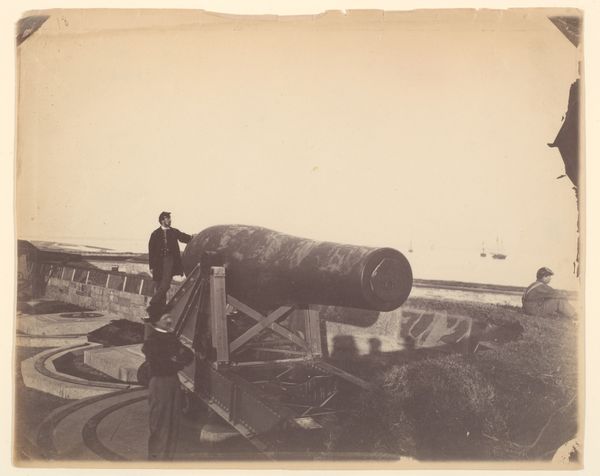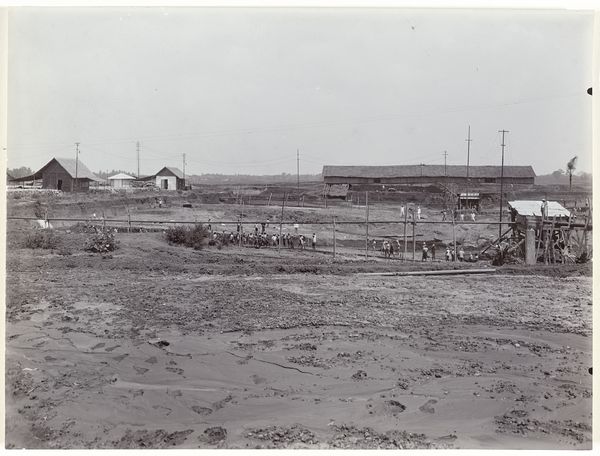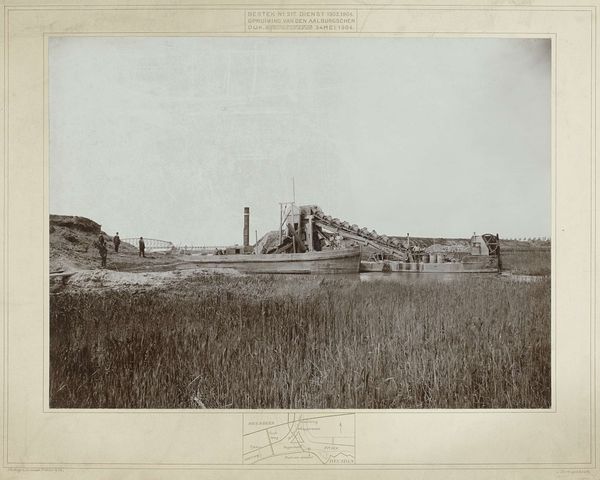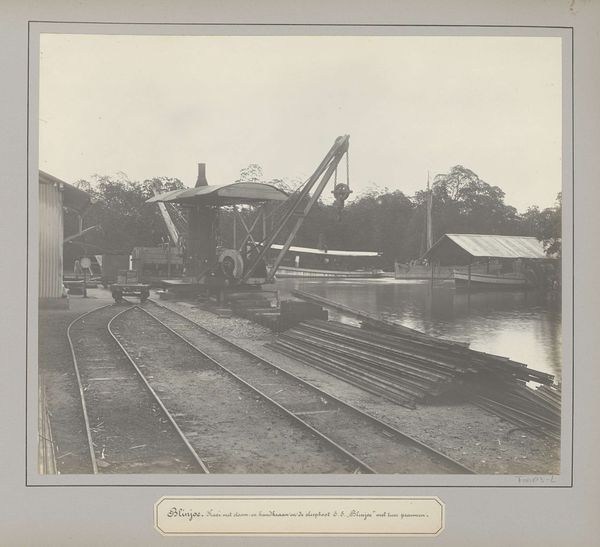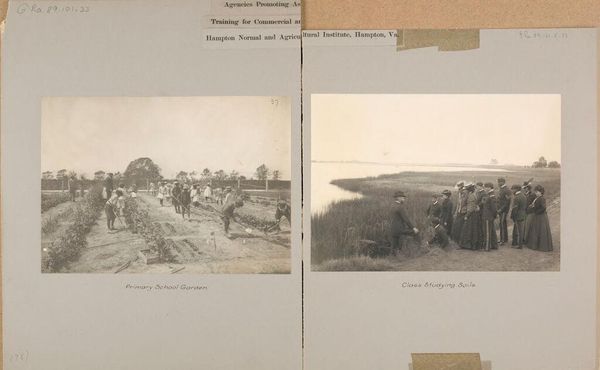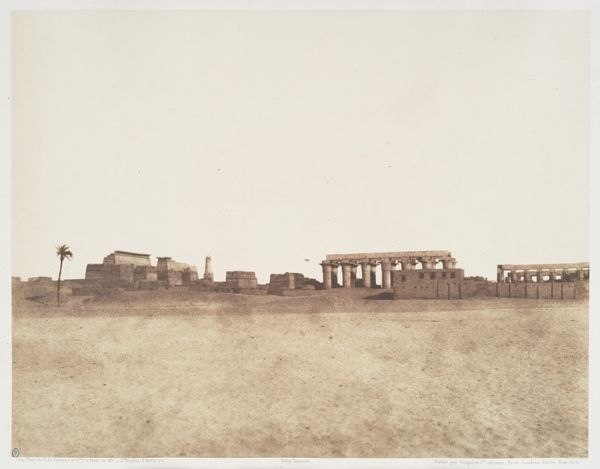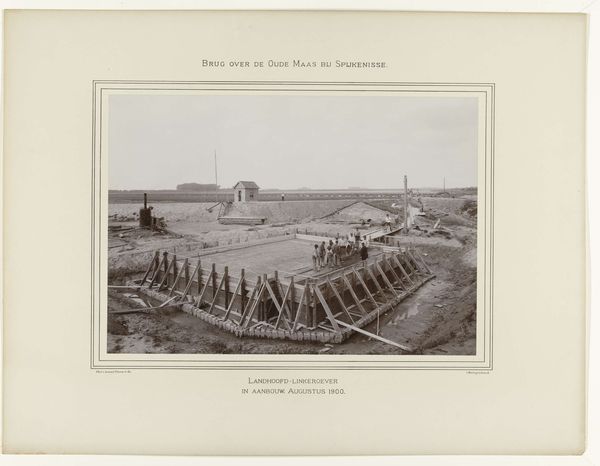
Aankomst van Machinedeelen op de Sf. Goenoengsari. 6 November 1926. 1926
0:00
0:00
anonymous
Rijksmuseum
photography
#
desaturated
#
reduced colour palette
#
muted colour palette
#
photo restoration
#
desaturated colours
#
light coloured
#
landscape
#
white palette
#
archive photography
#
photography
#
desaturated colour
#
soft colour palette
#
modernism
Dimensions: height 242 mm, width 299 mm
Copyright: Rijks Museum: Open Domain
Curator: "Aankomst van Machinedeelen op de Sf. Goenoengsari. 6 November 1926"— quite a mouthful, isn’t it? The Rijksmuseum houses this photograph; a vintage print showing the arrival of machine parts at a Javanese sugar factory. What jumps out at you? Editor: It's like looking at a ghost of industry. Bleak, almost. That washed-out palette—barely any color at all, gives it this feeling of being unearthed, like a forgotten record of a time long past. Curator: Exactly. The anonymous photographer captured a key moment. Look closer. This wasn't just about delivering machines, was it? It was about the machinery of colonial power asserting itself onto the landscape, fundamentally altering lives. Editor: You're right, the photograph serves as a silent witness. You have these hulking machines arriving. This photo is titled with almost sterile precision, 'Arrival of Machine Parts' is the closest translation, devoid of any human element, while everything is, in essence, is the exploitation of land and labor. The photograph objectifies what amounts to displacement and imposition of one economy over another. Curator: The composition further emphasizes this point. The machinery dominates the visual field. You also notice the sugar factory buildings, sharply rectilinear shapes looming large as opposed to the empty planes. There’s a contrast, a clash almost, between the organic and the geometric. It certainly invokes some anxiety... a sense of erasure, if you will. Editor: Precisely! It's a landscape disrupted, redefined by colonial ambitions. The softness of the greyscale further obscures the sharpness of the capitalist mission at stake: resource extraction. And who decides what progress means in that context? Whose narrative prevails? Curator: And I also wonder if the soft mutedness is on purpose? A desaturated truth as it were… It all feels quite intentional, doesn’t it? This is more than just an historical record. Editor: It leaves you grappling with so many paradoxes and forces, doesn’t it? The silence in this photographic scene seems very telling. It compels us to engage actively with the layers of history encoded in it. Curator: It makes one reflect how technologies were often brought with colonial aims, and in a wider sense about the lasting impact of such initiatives on shaping new worlds.
Comments
No comments
Be the first to comment and join the conversation on the ultimate creative platform.
